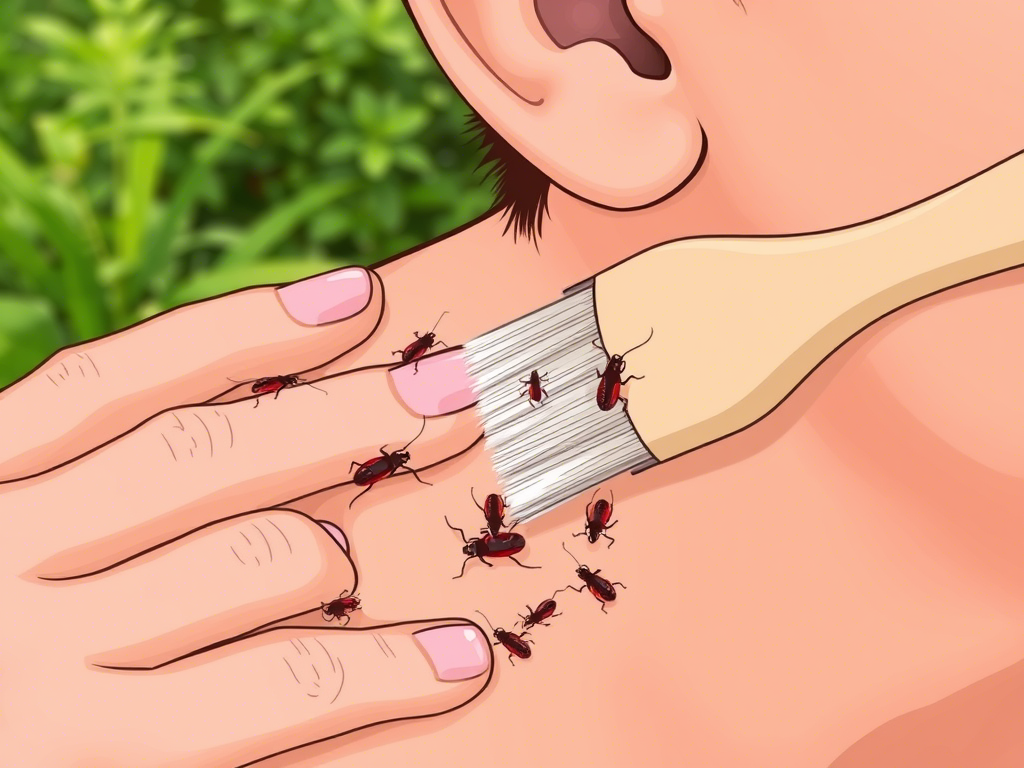Earwigs might not be the most dangerous pests, but they can certainly be a nuisance when they invade your home or garden. Known for their distinctive pincers and nocturnal habits, earwigs are often misunderstood creatures. While they play a beneficial role in some outdoor environments by eating other insects, their presence indoors or in large numbers can become problematic.
If you’re wondering how to get rid of earwigs effectively and prevent future infestations, you’ve come to the right place. In this detailed guide, we’ll walk you through proven methods to eliminate earwigs , both naturally and with chemical solutions. Whether you’re dealing with an indoor invasion or battling them in your garden, this step-by-step approach will help you reclaim your space.
Understanding Earwigs: What You Need to Know
Before diving into removal strategies, it’s important to understand what earwigs are and why they appear where they do.
What Are Earwigs?
Earwigs are small, elongated insects belonging to the order Dermaptera. They’re easily recognized by the pair of forceps-like pincers on their abdomen, which males use during mating and defense. Contrary to popular myth, earwigs do not crawl into human ears or burrow into brains.
Why Do Earwigs Infest Homes?
Earwigs are attracted to dark, damp, and warm environments. They typically enter homes seeking shelter from extreme weather conditions—especially during hot summers or rainy seasons. Common entry points include cracks in walls, gaps around windows, and doorways.
Are Earwigs Harmful?
While they may look intimidating, earwigs are generally harmless to humans. They don’t bite or sting, though they may pinch if handled roughly. However, in large numbers, they can damage plants, flowers, and vegetables, making them unwelcome guests in gardens and greenhouses.
Step-by-Step Guide: How to Get Rid of Earwigs
Now that you know more about these insects, let’s explore practical steps to remove earwigs from your home and yard.
Step 1: Identify the Infestation
The first step in any pest control process is identifying the problem area.
- Indoor signs : Look for earwigs in basements, bathrooms, kitchens, and under sinks.
- Outdoor signs : Check mulched areas, flowerbeds, compost piles, and beneath rocks or logs.
Tip : Use a flashlight at night to spot earwigs, as they are primarily active after dusk.
Step 2: Eliminate Moisture Sources
Since earwigs thrive in moist environments, reducing humidity is key to driving them away.
Indoor Tips:
- Fix leaky pipes and faucets.
- Use dehumidifiers in basements and crawl spaces.
- Ensure proper ventilation in bathrooms and laundry rooms.
Outdoor Tips:
- Redirect downspouts away from your home.
- Avoid overwatering plants.
- Replace organic mulch with gravel or rubber mulch, which retains less moisture.
Step 3: Seal Entry Points
Preventing earwigs from entering your home is crucial for long-term control.
- Seal cracks and crevices around windows, doors, and foundations using caulk or weatherstripping.
- Install door sweeps to close gaps at the bottom of exterior doors.
- Repair damaged window screens and vents.
Pro Tip : Regularly inspect your home’s exterior for potential entry points, especially before seasonal changes.
Step 4: Remove Hiding Spots Around Your Home
Earwigs hide in cluttered, dark places during the day. Removing these habitats discourages them from staying near your property.
- Clear away leaf litter, woodpiles, and debris from your yard.
- Store firewood off the ground and away from your house.
- Keep garden tools and equipment organized and elevated.
Step 5: Use Natural Remedies to Repel Earwigs
For those who prefer eco-friendly solutions, several natural methods can help repel or trap earwigs without harsh chemicals.
1. Diatomaceous Earth (DE)
Sprinkle food-grade DE around garden beds and foundation perimeters. It works by dehydrating the exoskeleton of earwigs.
2. Oil Traps
Place shallow containers filled with fish oil or vegetable oil near infested areas. Earwigs are attracted to the smell and drown in the liquid.
3. Soapy Water Spray
Mix dish soap with water in a spray bottle and apply directly to earwigs. The soap breaks their surface tension and kills them on contact.
4. Essential Oils
Peppermint, lavender, and eucalyptus oils act as natural repellents. Mix a few drops with water and spray around entry points and garden beds.
For more eco-friendly pest control ideas, check out EcoWatch’s guide to natural insecticides .
Step 6: Set Up Traps Indoors and Outdoors
Trapping earwigs is an effective way to reduce their population without spreading chemicals.
Outdoor Traps:
- Newspaper rolls : Dampen newspapers, roll them up, and place them in the garden overnight. In the morning, collect the rolled paper and dispose of the trapped earwigs.
- Tuna Can Trap : Fill a tuna can halfway with cooking oil and bury it in the soil so the rim is level with the ground.
Indoor Traps:
- Cup and Paper Towel Method : Place a damp paper towel inside a cup and leave it overnight. Earwigs will gather underneath the towel, allowing you to discard them in the morning.
Step 7: Apply Chemical Treatments When Necessary
If natural methods aren’t enough, consider using targeted chemical treatments.
1. Insecticidal Sprays
Use pyrethroid-based sprays such as cypermethrin or deltamethrin around the perimeter of your home, garden beds, and entry points.
2. Granular Insecticides
Apply granules containing bifenthrin or carbaryl around lawns and garden edges to target earwig populations.
3. Dust Insecticides
For hard-to-reach areas like wall voids, use boric acid or diatomaceous earth dust to kill earwigs on contact.
Always follow label instructions carefully and keep children and pets away from treated areas.
Step 8: Encourage Natural Predators
Nature provides its own form of pest control. Encouraging predators that feed on earwigs can help maintain balance in your garden ecosystem.
- Birds : Attract insect-eating birds by installing birdhouses or birdbaths.
- Lizards and Frogs : Create a small pond or water feature to attract these natural predators.
- Beneficial Nematodes : These microscopic worms attack earwig larvae in the soil.
Learn more about biological pest control from the University of Minnesota Extension .
Step 9: Maintain a Clean and Dry Environment
Regular maintenance plays a big role in preventing earwig infestations.
- Keep gutters clean to avoid water buildup.
- Trim bushes and trees away from your home to reduce shaded, moist areas.
- Store garbage bins away from the house and ensure lids are tightly sealed.
Step 10: Monitor and Prevent Recurrence
Even after eliminating earwigs, it’s important to monitor your environment regularly to prevent future problems.
- Conduct monthly inspections of your home’s exterior and interior.
- Reapply natural repellents or traps seasonally.
- Stay alert during humid or rainy periods, as these are peak times for earwig activity.
Bonus Tips for Gardeners: Protecting Your Plants
If you grow fruits, vegetables, or ornamental plants, here’s how to protect them from earwig damage:
- Cover young plants with row covers until they mature.
- Plant herbs like basil, mint, or sage, which naturally repel pests.
- Use copper tape around raised garden beds to deter crawling insects.
Frequently Asked Questions (FAQ)
Q1: Do earwigs really crawl into ears?
No, this is a common myth. Earwigs do not intentionally crawl into human ears or cause harm to the brain.
Q2: Are earwigs dangerous to pets?
Earwigs are not harmful to dogs or cats. While they may pinch if provoked, they pose no serious threat to animals.
Q3: What attracts earwigs to my house?
Earwigs are attracted to moisture, darkness, and warmth. Leaky plumbing, high humidity, and cluttered outdoor spaces make homes appealing to them.
Q4: Can I kill earwigs with bleach?
Yes, mixing bleach with water and spraying it on earwigs can kill them on contact. However, it’s not recommended for use outdoors due to environmental concerns.
Q5: Do earwigs fly?
Some species of earwigs have wings and can fly short distances, although many prefer crawling.
Q6: How long do earwigs live?
Earwigs typically live for about one year. Females lay eggs in the spring, and new generations emerge in late summer.
Q7: Should I kill earwigs in my garden?
It depends. While earwigs can damage plants, they also eat aphids and other pests. Consider trapping and relocating them instead of killing them unless they’re causing significant harm.
Final Thoughts: Say Goodbye to Earwigs for Good
Knowing how to get rid of earwigs doesn’t have to be complicated. With a combination of preventive measures, natural remedies, and targeted treatments, you can keep these insects at bay—both indoors and outdoors. Whether you’re dealing with a minor annoyance or a full-blown infestation, the steps outlined above provide a comprehensive strategy to restore peace to your home and garden.
Remember, consistency is key. Regular inspections, habitat elimination, and moisture control go a long way in preventing future earwig problems. If you found this guide helpful, be sure to share it with friends or neighbors who might be battling earwigs too!
For more expert tips on pest control and home maintenance, visit thehowtotips.com —your go-to resource for practical, easy-to-follow guides.

